
Teaching French direct objects and pronouns can be so difficult! Students don’t always understand grammar very well in their native language, so it’s important to be very thorough when teaching and to make sure that they understand each skill before adding more information.
While students are able to use French direct objects in their native language with no problem, they often have no idea what they are. There are plenty of fun and effective ways to teach French object pronouns in the FSL, Core French, and French immersion classroom. Here’s what I have done that has worked really well for my students.
1. Present French direct objects with a PowerPoint presentation.
Of course you’ll want to speak a lot of French using direct and indirect objects as you normally would, but direct instruction is important so that students understand what you are talking about when you get into the “preceding direct object” stuff with the passé composé. They have to know the terms!
My PowerPoint presentation walks through exactly what French direct objects are before continuing on to explain indirect objects, too. Students learn how to identify them, and how to replace them with pronouns. There are notes pages and practice pages, and it’s easy to move at just the right pace.
Click here to learn more about the French direct objects PowerPoint presentation.
2. Provide detailed notes so that students can follow along as you present the concept.
My notes and activities pack goes along with the PowerPoint presentation, so students can follow along and write in their own packets. It’s full of writing activities, and it even includes a full-French version and an English notes version.
It includes French direct objects and their pronouns, indirect objects and their pronouns, negation with one verb or two, using multiple pronouns together, and past participle agreement with the direct object pronouns. Packet includes a variety of quizzes so you can teach as much or as little as your curriculum requires.
Here’s a peek at some pages in my French direct objects student packet:
Click here to see the French direct objects packet.
3. Don’t move too fast.
A lot of pacing guides will tell you to teach this in a very short window. I’ve found that my students never fully understood it in such a short amount of time. I would really rather take longer on the important concepts and make sure my students really understand them than hurry through something to “cover” more vocabulary.
If students don’t understand French direct objects and how to use their pronouns, it will be harder to teach them with other verb tenses. By spending time here, it makes other types of pronouns, such as those found with reflexive verbs, much easier to learn. You’re building a foundation, and the stronger the foundation, the better results you will have in the future.
4. Make sure students get a lot of different types of practice.
Writing activities are great for practice, but to truly master the object pronouns, students have to have plenty of different ways to practice. In addition to writing activities that build step-by-step on the concepts, this pack has speaking and listening activities, games, manipulatives, exit tickets, and puzzles.

Click here to see find these cards in the French direct and indirect objects packet.
5. Don’t be afraid to use English to help them understand.
I’m a big believer in speaking as much French as possible from the start. I’ve taught the French direct objects and their pronouns in FSL and immersion, and obviously, in an immersion setting, I taught them in French-only.
However, some kids really can benefit from the extra support of English notes, because they just don’t have enough mastery of the French language or they really don’t understand it in English. If you are not allowed to teach in English, perhaps an English-notes version to keep at home would be a helpful tool for students who need it.
Want some ideas for how you can use more French in class? Read this!
6. Review as much as needed and correct as often as you can.
Realize that you’ll come back to this over and over, so if you need to circle back to direct and indirect pronouns and review them as you work on the futur simple or the imparfait, that’s perfectly okay. I’ve heard kids who spoke with ease say things such as “J’ai dit à lui,” or “J’ai besoin de donner ça à vous.”
It’s okay, because they made these mistakes before they understood the structure, and now they are just a habit. Your job is to help them break the habit. Correct them, help them hear it right and say it right. With enough practice, they will begin to recognize what sounds right.
7. Get them moving!
If you’re familiar with my resources and teaching strategies, then you know that I love activities where students can move. Not only does it help them retain information, but movement-based learning is really important for students who don’t learn as well sitting still.
My son has ADHD, and sitting all day for him is really hard. We review grammar, verbs, and vocabulary as he dribbles a ball, jumps rope, or rides his scooter around the basement. He gets it SO much faster if he can move while he’s learning.
Games like Scoot! are perfect for a quiz or test review, because you can still have students practicing with the grammar, but it’s more fun than a worksheet! Even French past particle agreement with a preceding direct object will be more fun with this French object pronouns scoot game. 😉
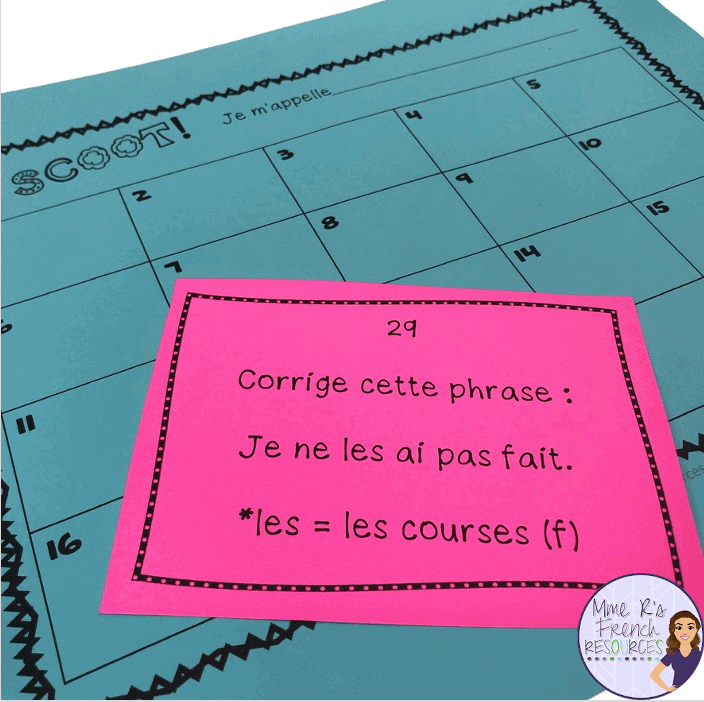
8. Incorporate technology
We all know kids love screens. I don’t think technology can ever be a replacement for hands-on activities and cooperative learning tasks, but it sure does make a handy tool to have.
Boom Cards™ are a fun way to incorporate technology for the 1:1 classroom, but you can also use them for a quick assessment, whole-class practice, or even as homework. You can play them on your interactive whiteboard, or you can have students play them on a personal device. Here’s a peek at the French direct objects activity available at Boom Learning.
*You do need an internet connection to play Boom Cards.
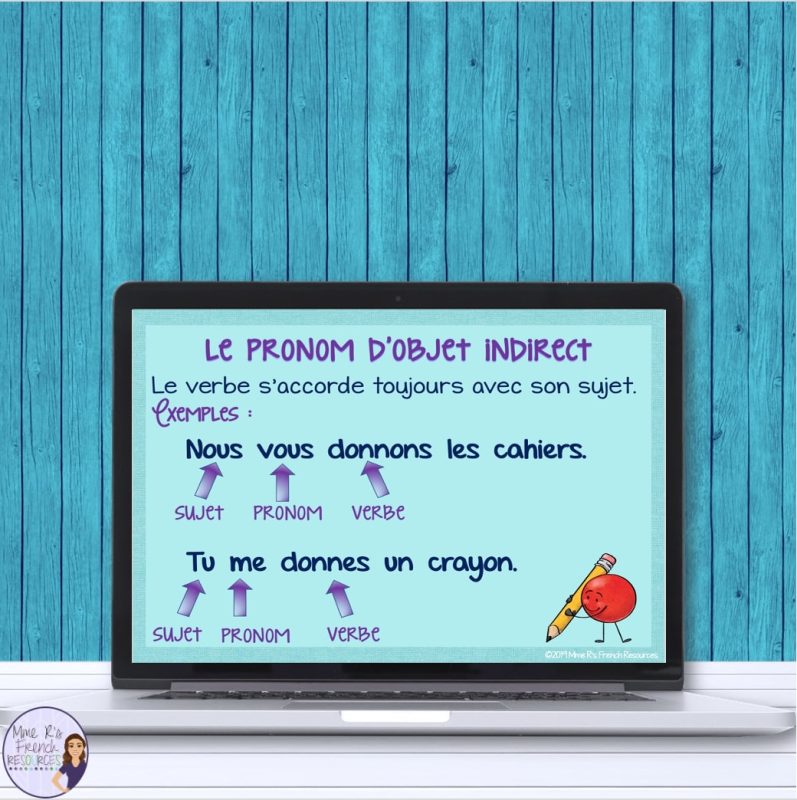
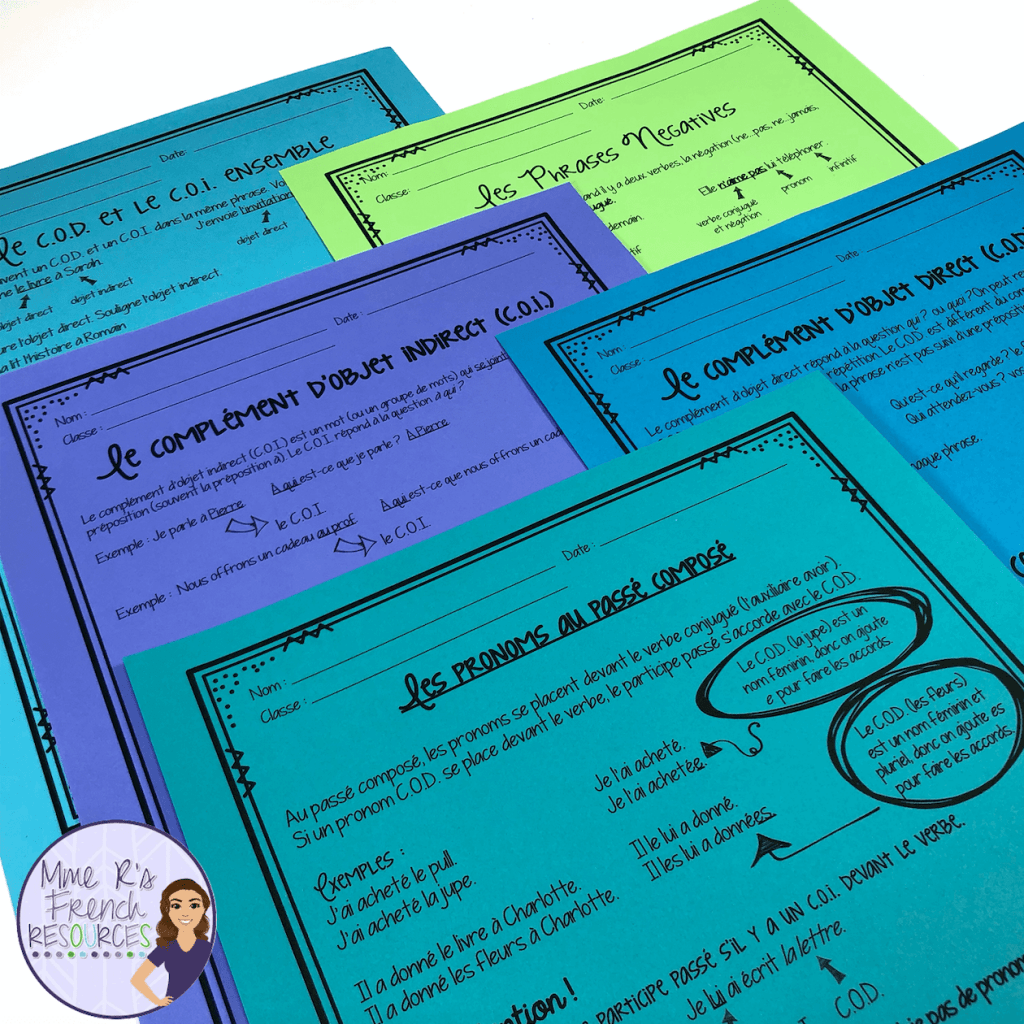
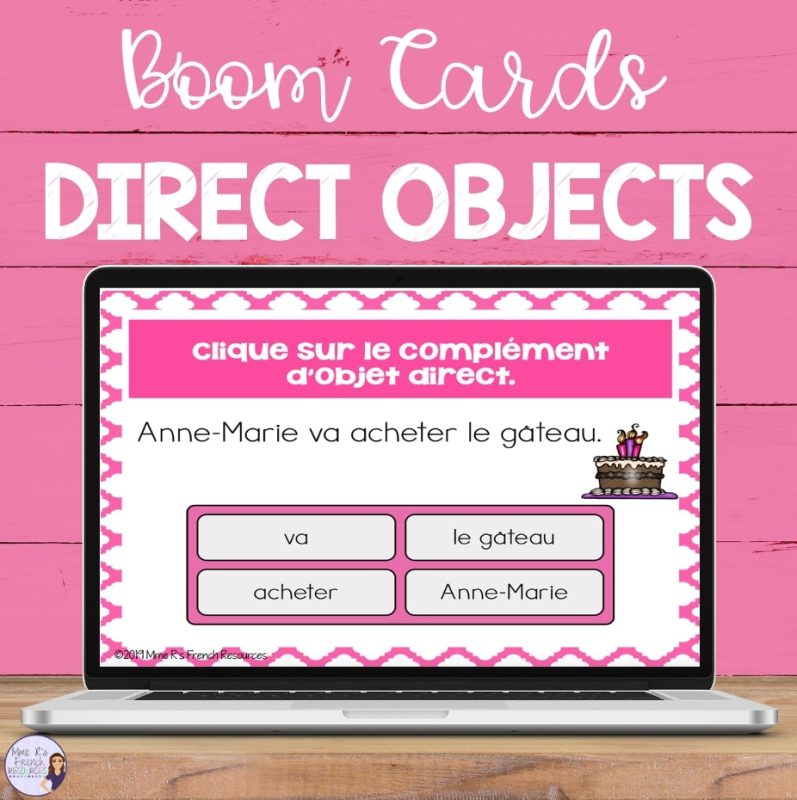
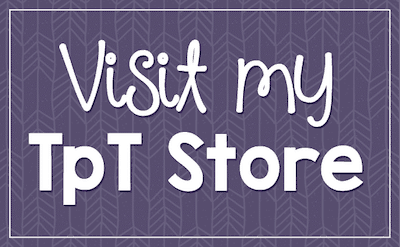

[…] Learn more about teaching direct and indirect objects here. […]